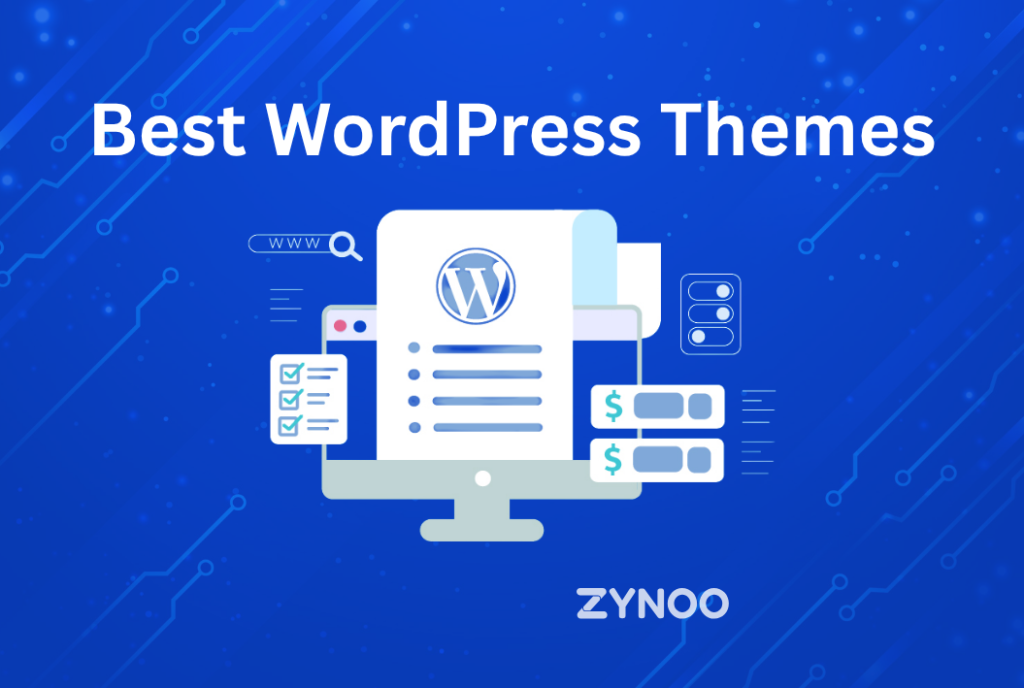When it comes to choosing an eCommerce platform, the decision can be daunting. WooCommerce and PrestaShop are two popular options, each with its strengths and unique features. This article delves into a comprehensive comparison of WooCommerce vs PrestaShop to help you make an informed decision for your online store.

Introduction
In today’s digital era, eCommerce platforms play a crucial role in the success of online businesses. With numerous options available, selecting the right one requires careful consideration. WooCommerce vs PrestaShop are among the top contenders, each offering distinct advantages. This article provides a detailed comparison of these platforms, exploring their features, pricing, ease of use, customization capabilities, and more.
The Importance of Choosing the Right eCommerce Platform
Selecting the right eCommerce platform is critical for the success of any online business. The platform you choose will influence your store’s functionality, user experience, and overall growth potential. A well-suited platform can streamline operations, enhance customer satisfaction, and drive sales, while a poor choice can hinder your business development.
WooCommerce Overview
WooCommerce is an open-source eCommerce plugin for WordPress, launched in 2011. It is designed to help businesses of all sizes create and manage online stores. WooCommerce is highly popular due to its flexibility, extensive plugin ecosystem, and user-friendly interface.
Key Features of WooCommerce
- Integration with WordPress: Seamlessly integrates with WordPress, leveraging its content management capabilities.
- Customizable Storefront: Offers numerous themes and customization options to create a unique store.
- Extensive Plugin Ecosystem: Thousands of plugins available to extend functionality.
- SEO Friendly: Built on WordPress, which is known for its strong SEO capabilities.
- Flexible Product Management: Supports various product types, including physical, digital, and affiliate products.
- Robust Reporting Tools: Provides detailed analytics and reporting features.
- Mobile-Friendly: Optimized for mobile devices to ensure a seamless shopping experience.
PrestaShop Overview
PrestaShop is an open-source eCommerce platform launched in 2007. It is known for its rich feature set and flexibility, making it a popular choice for medium to large online stores. PrestaShop offers a comprehensive solution for managing product listings, payments, shipping, and more.
Key Features of PrestaShop
- Feature-Rich Platform: Includes a wide range of built-in features for managing an online store.
- Customizable Themes: Allows extensive customization of themes and templates.
- International Selling: Supports multiple languages and currencies, making it ideal for global businesses.
- Advanced Inventory Management: Provides powerful tools for inventory control and product management.
- SEO Capabilities: Offers robust SEO tools to enhance search engine visibility.
- Integrated Marketing Tools: Includes built-in marketing and promotional tools.
- Community Support: A strong community of developers and users provides extensive support and resources.
WooCommerce vs PrestaShop
Ease of Use
WooCommerce: WooCommerce is renowned for its ease of use, especially for those already familiar with WordPress. The installation process is straightforward, and the interface is intuitive, allowing users to set up their stores quickly.
PrestaShop: PrestaShop offers a comprehensive back-end interface that can be overwhelming for beginners. However, it provides extensive documentation and a user-friendly dashboard for managing your store once you get the hang of it.
Customization Options
WooCommerce: WooCommerce offers vast customization possibilities through themes and plugins. The flexibility of WordPress allows users to modify their stores extensively, catering to specific business needs.
PrestaShop: PrestaShop is highly customizable with its modules and themes. The platform supports significant modifications, enabling businesses to create unique and tailored online stores.
Pricing and Costs
WooCommerce: WooCommerce is a free plugin, but costs can add up with premium themes, plugins, and hosting services. Users should budget for these additional expenses.
PrestaShop: PrestaShop is also free to download and use. However, like WooCommerce, the total cost can increase with premium modules, themes, and hosting services.
SEO Capabilities
WooCommerce: Built on WordPress, WooCommerce benefits from excellent SEO capabilities. Numerous SEO plugins, such as Yoast SEO, are available to optimize your store’s search engine performance.
PrestaShop: PrestaShop includes built-in SEO features, such as customizable URLs, meta tags, and sitemaps. It offers robust tools to enhance your store’s visibility in search engines.
Security Features
WooCommerce: Security largely depends on the hosting provider and the plugins used. Regular updates and security plugins can help safeguard your store.
PrestaShop: PrestaShop provides several security features out of the box. However, users must stay vigilant with updates and additional security modules to ensure optimal protection.
Customer Support
WooCommerce: WooCommerce offers extensive documentation and a large community for support. Premium users can access dedicated support through WooCommerce.com.
PrestaShop: PrestaShop offers various support options, including a large community forum, documentation, and paid support plans for professional assistance.
Payment Options
WooCommerce: WooCommerce supports a wide range of payment gateways, including PayPal, Stripe, and various local options. Additional gateways can be integrated via plugins.
PrestaShop: PrestaShop supports numerous payment gateways and offers integration with popular options like PayPal and Stripe. Additional modules can add more payment options.
Performance and Speed
WooCommerce: Performance can vary based on hosting and plugins. Optimized hosting and caching solutions can significantly enhance WooCommerce’s speed and performance.
PrestaShop: PrestaShop is known for its performance, but proper hosting and optimization are crucial. The platform can handle large catalogs efficiently with the right setup.
Scalability
WooCommerce: WooCommerce is highly scalable, making it suitable for small to large businesses. As your store grows, you can add more features and handle increased traffic.
PrestaShop: PrestaShop is designed for scalability, supporting large product catalogs and high traffic volumes. It is ideal for businesses planning to expand their online presence.
Community and Add-Ons
WooCommerce: WooCommerce has a vast community and a plethora of plugins and extensions. This ecosystem allows users to find solutions for almost any functionality they need.
PrestaShop: PrestaShop also boasts a large community and a wide range of modules and add-ons. This support network helps users customize and extend their store’s capabilities.
Which Platform is Better for Beginners?
WooCommerce for Beginners
WooCommerce is an excellent choice for beginners, particularly those already familiar with WordPress. The installation and setup process is simple, and the user-friendly interface makes managing an online store straightforward.
PrestaShop for Beginners
While PrestaShop offers extensive features, its complexity can be challenging for beginners. However, with the help of detailed documentation and tutorials, new users can learn to navigate the platform effectively.
Which Platform is Better for Advanced Users?
WooCommerce for Advanced Users
Advanced users will appreciate WooCommerce’s flexibility and the vast array of customization options. The extensive plugin ecosystem allows for deep customization, making it ideal for those who want to tailor their store precisely.
PrestaShop for Advanced Users
PrestaShop is a powerful platform for advanced users, offering extensive customization and robust features. Its modular design allows experienced developers to create highly tailored eCommerce solutions.
Case Studies
Successful WooCommerce Stores
Numerous successful businesses use WooCommerce, ranging from small boutiques to large
enterprises. Examples include the New Zealand-based Wool and the Gang and the technology retailer, Makeblock.
Successful PrestaShop Stores
PrestaShop also powers many successful online stores, such as the French cosmetics brand, CosmétiCar, and the UK-based fashion retailer, Espace des Marques.
Pros and Cons
Advantages of WooCommerce
- Integration with WordPress: Seamless integration with the popular CMS.
- Extensive Plugin Ecosystem: Thousands of plugins to enhance functionality.
- User-Friendly: Easy to set up and manage, especially for WordPress users.
- SEO Friendly: Excellent SEO capabilities built into the platform.
Disadvantages of WooCommerce
- Additional Costs: Expenses can add up with premium plugins and themes.
- Dependency on WordPress: Requires a WordPress installation, which may not suit all users.
Advantages of PrestaShop
- Feature-Rich: Comprehensive eCommerce features out of the box.
- Customizable: Highly flexible with themes and modules.
- International Selling: Supports multiple languages and currencies.
- Community Support: Strong community with extensive resources and support.
Disadvantages of PrestaShop
- Complexity: Can be overwhelming for beginners.
- Additional Costs: Premium modules and themes can increase overall costs.
Migration Process
How to Migrate from PrestaShop to WooCommerce
Migrating from PrestaShop to WooCommerce involves several steps, including exporting product and customer data, importing it into WooCommerce, and setting up the necessary plugins and themes. Various tools and services can assist with this process to ensure a smooth transition.
How to Migrate from WooCommerce to PrestaShop
Migrating from WooCommerce to PrestaShop requires exporting data from WooCommerce, importing it into PrestaShop, and configuring your new store. Like the reverse process, several migration tools are available to help with this transition.
Final Verdict
Choosing the Right Platform for Your Business
The choice between WooCommerce and PrestaShop ultimately depends on your specific needs and preferences. WooCommerce is ideal for users seeking a user-friendly, flexible platform with a strong plugin ecosystem. In contrast, PrestaShop is perfect for those who require a feature-rich, scalable solution with extensive customization options.
FAQs
What are the main differences between WooCommerce and PrestaShop?
The primary differences lie in their integration, ease of use, and customization capabilities. WooCommerce integrates seamlessly with WordPress, making it user-friendly, while PrestaShop offers a standalone, feature-rich solution with extensive customization.
Which platform is more cost-effective?
Both platforms are free to use, but costs can add up with premium themes, plugins, and hosting. The total cost depends on the specific needs and choices of the business.
Can I migrate my store from WooCommerce to PrestaShop or vice versa?
Yes, migration between WooCommerce and PrestaShop is possible using various tools and services designed to transfer data smoothly between the two platforms.
Which platform offers better customization options?
Both platforms offer extensive customization options. WooCommerce leverages the flexibility of WordPress and its vast plugin ecosystem, while PrestaShop provides a modular design with numerous themes and modules.
How do WooCommerce and PrestaShop handle SEO?
WooCommerce, built on WordPress, benefits from strong SEO capabilities and numerous SEO plugins. PrestaShop includes built-in SEO tools, such as customizable URLs and meta tags, to enhance search engine visibility.
What kind of customer support can I expect from WooCommerce and PrestaShop?
WooCommerce offers extensive documentation and community support, with premium support available for paid users. PrestaShop provides various support options, including community forums, documentation, and paid support plans.
Conclusion
In the WooCommerce vs PrestaShop debate, the best platform for your business depends on your unique requirements and preferences. WooCommerce is a fantastic option for those seeking integration with WordPress, user-friendly design, and extensive plugins. PrestaShop, on the other hand, is ideal for businesses looking for a standalone, feature-rich platform with robust customization capabilities. Evaluate your needs, budget, and technical expertise to make the right choice for your online store.



